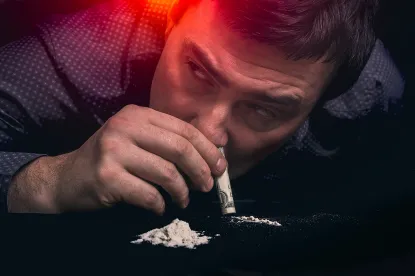Xylazine is a non-scheduled, non-opioid sedative/analgesic medication that is widely used in veterinary medicine. Xylazine was first produced by Bayer Pharmaceuticals in 1962, but investigations for use in humans were not successful as it caused severe low blood pressure and central nervous system depression.
Despite not being approved for human consumption, illicit use of xylazine has accelerated in recent years. The National Institute of Drug Abuse (NIDA) attributes xylazine use with case reports of dangerously low blood pressure, low heart rate, slow breathing, coma, and necrotic skin lesions. Most overdose fatalities in which xylazine is identified also involve other substances, such as cocaine, heroin, and opioids, such as fentanyl. Narcan (naloxone), an opioid reversal drug, is not effective in reversing the impact of xylazine on a person’s breathing; thus, the use of xylazine with opioids, alcohol, and other central nervous system depressant medications increases the potential of life-threatening overdose. The Drug Enforcement Administration (DEA) reports that the prevalence of mixing xylazine with opioids is increasing, and xylazine use may emerge as an abused drug on its own in the future.
Currently, xylazine is not controlled under the Controlled Substances Act (CSA), and as such, the DEA does not have the authority to regulate it. However, some states are taking steps to classify xylazine as a controlled substance.
How does xylazine reach the general public? Public health and law enforcement officials blame the black market, either via diversion from the veterinary supply chain or illicit underground manufacturing. Currently, xylazine is not controlled under the Controlled Substances Act (CSA), and as such, the DEA does not have the authority to regulate it. However, some states are taking steps to classify xylazine as a controlled substance. For example, the Illinois General Assembly presented a bill (SB2089) in February of this year that would amend the Illinois Controlled Substances Act to add xylazine as a Schedule I controlled substance and provides for penalties for the knowing manufacture or delivery, or possession with the intent to manufacture or deliver xylazine. Additionally, the State of Ohio Board of Pharmacy classified xylazine as a Schedule III controlled substance via emergency rule on March 29, 2023. Pursuant to this new classification, in order for a veterinary practice to order xylazine from a licensed wholesaler, the practice must first obtain a Category 3 Terminal Distributor of Dangerous Drugs license. Likewise, wholesale distributors of xylazine to veterinarians must obtain a Category 3 Distributor license.
At the federal level, bipartisan legislation (S. 993/H.R. 1839, Combating Illicit Xylazine Act) was introduced earlier this year. The Act seeks to classify xylazine as a Schedule III controlled substance, enable the DEA to track the manufacturing of xylazine, require a report on the prevalence, risks, and recommendations to best regulate the illicit use of xylazine, ensure that all xylazine salts and isomers are covered under the restriction of the illicit use of xylazine, and declare xylazine an emerging drug threat. The Act is endorsed by the American Veterinary Medical Association and seeks to protect access to xylazine by veterinarians, farmers, cattlemen and ranchers.
As a practicing veterinarian, I am encouraged that legislative steps are being taken to protect the public health. At the same time, I can’t help but ponder the potential impact of xylazine legislation on veterinary medicine.
As a practicing veterinarian, I am encouraged that legislative steps are being taken to protect the public health. At the same time, however, I can’t help but ponder the potential impact of xylazine legislation on veterinary medicine. Will it be harder for veterinarians to obtain xylazine? If so, will animal care be hindered? Will veterinarians utilize other non-controlled medications in the place of xylazine that may not be as effective in treating the patient? Will legislation increase costs for legitimate manufacturers and distributors of xylazine, leading to decreased supply and higher costs passed on to veterinarians and their clients?



 />i
/>i

